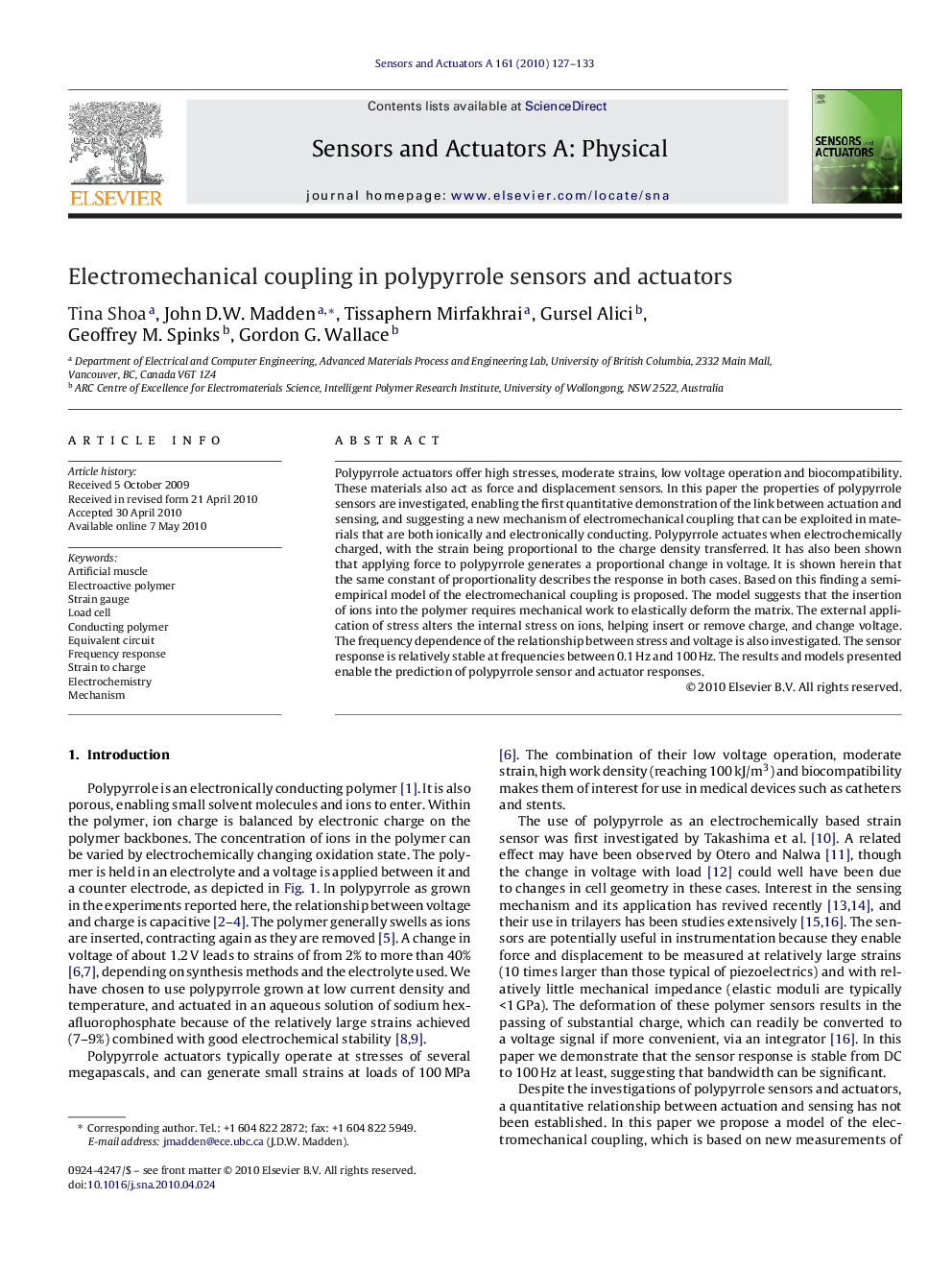| Article ID | Journal | Published Year | Pages | File Type |
|---|---|---|---|---|
| 740171 | Sensors and Actuators A: Physical | 2010 | 7 Pages |
Polypyrrole actuators offer high stresses, moderate strains, low voltage operation and biocompatibility. These materials also act as force and displacement sensors. In this paper the properties of polypyrrole sensors are investigated, enabling the first quantitative demonstration of the link between actuation and sensing, and suggesting a new mechanism of electromechanical coupling that can be exploited in materials that are both ionically and electronically conducting. Polypyrrole actuates when electrochemically charged, with the strain being proportional to the charge density transferred. It has also been shown that applying force to polypyrrole generates a proportional change in voltage. It is shown herein that the same constant of proportionality describes the response in both cases. Based on this finding a semi-empirical model of the electromechanical coupling is proposed. The model suggests that the insertion of ions into the polymer requires mechanical work to elastically deform the matrix. The external application of stress alters the internal stress on ions, helping insert or remove charge, and change voltage. The frequency dependence of the relationship between stress and voltage is also investigated. The sensor response is relatively stable at frequencies between 0.1 Hz and 100 Hz. The results and models presented enable the prediction of polypyrrole sensor and actuator responses.
